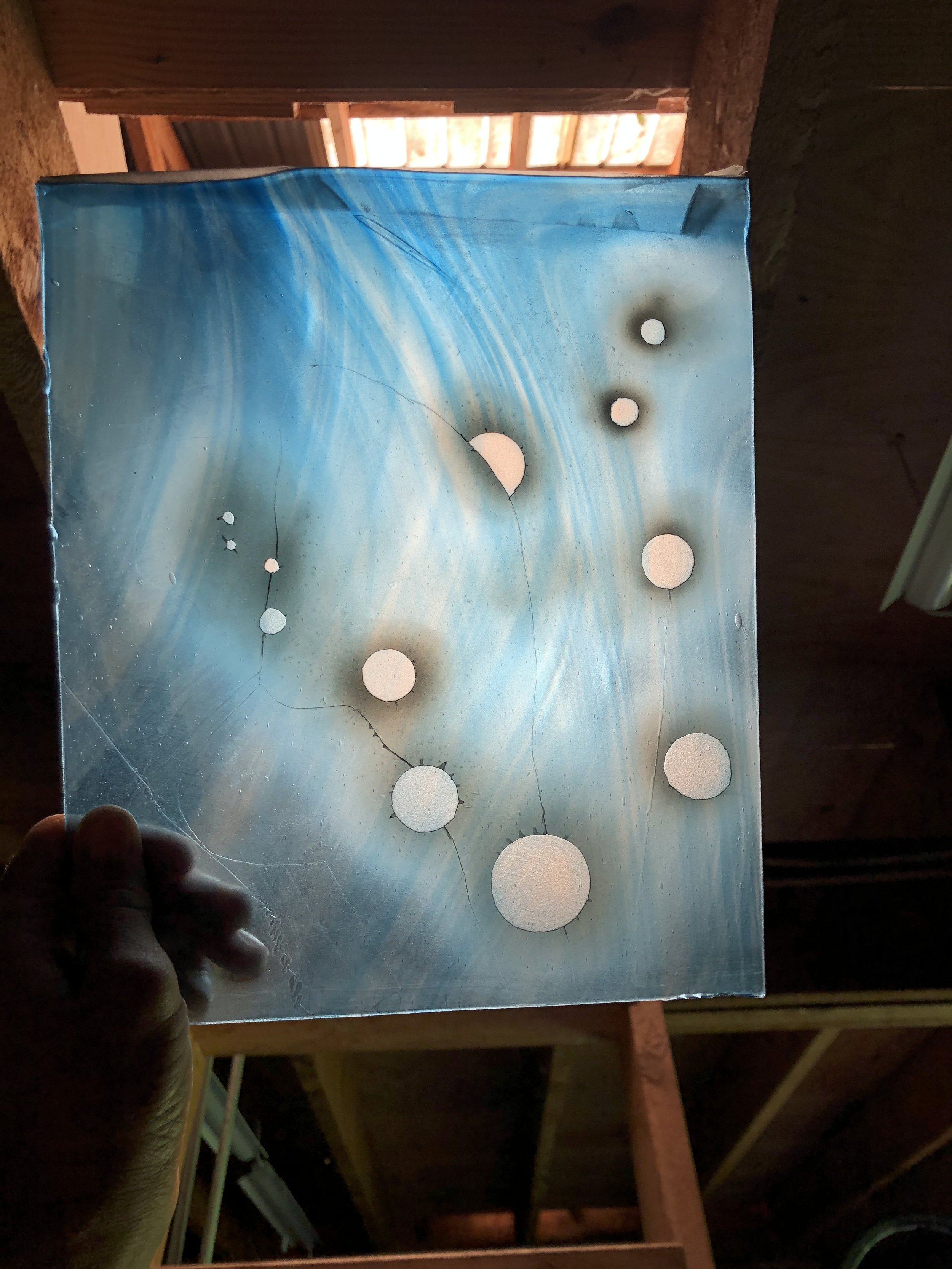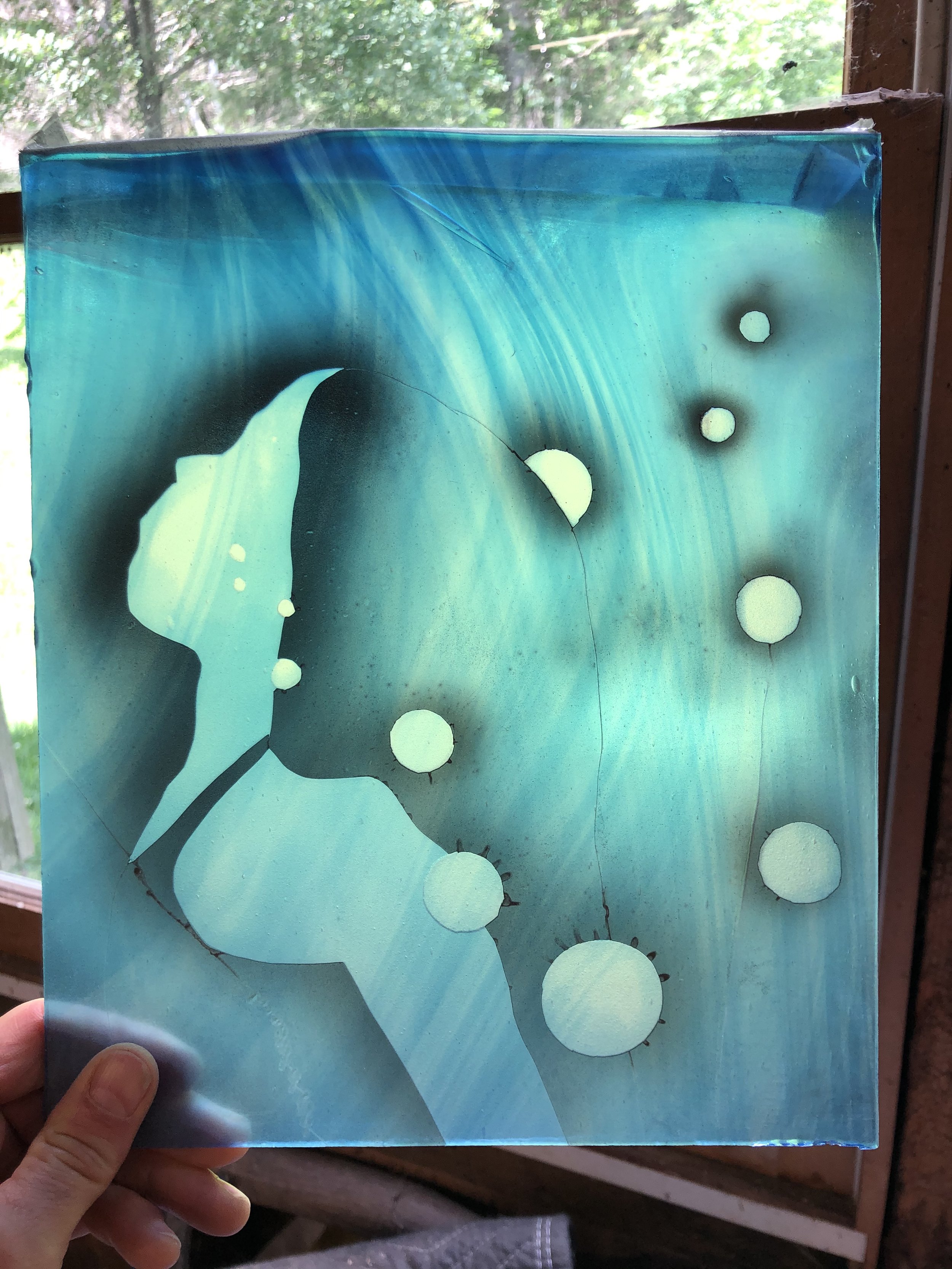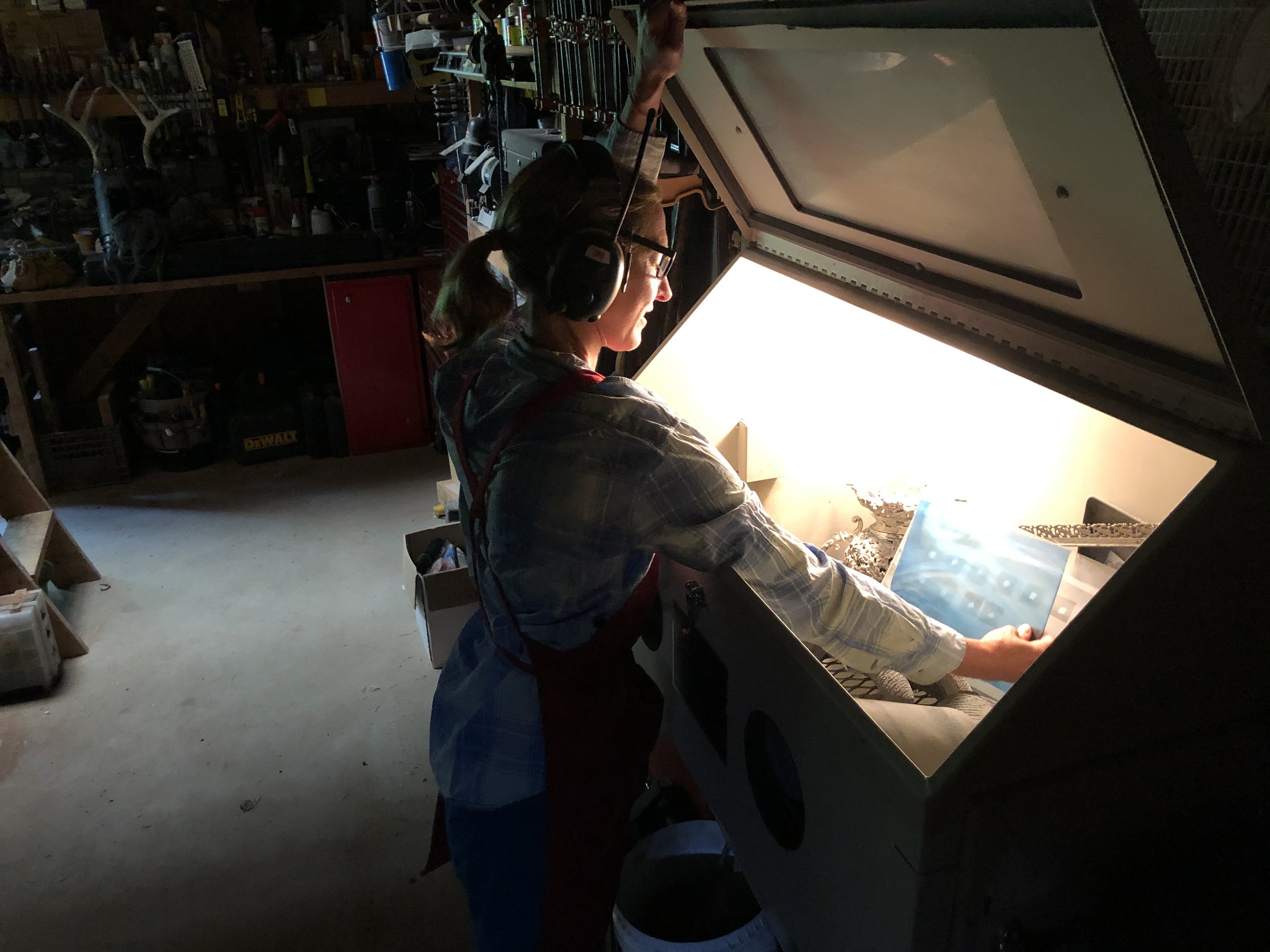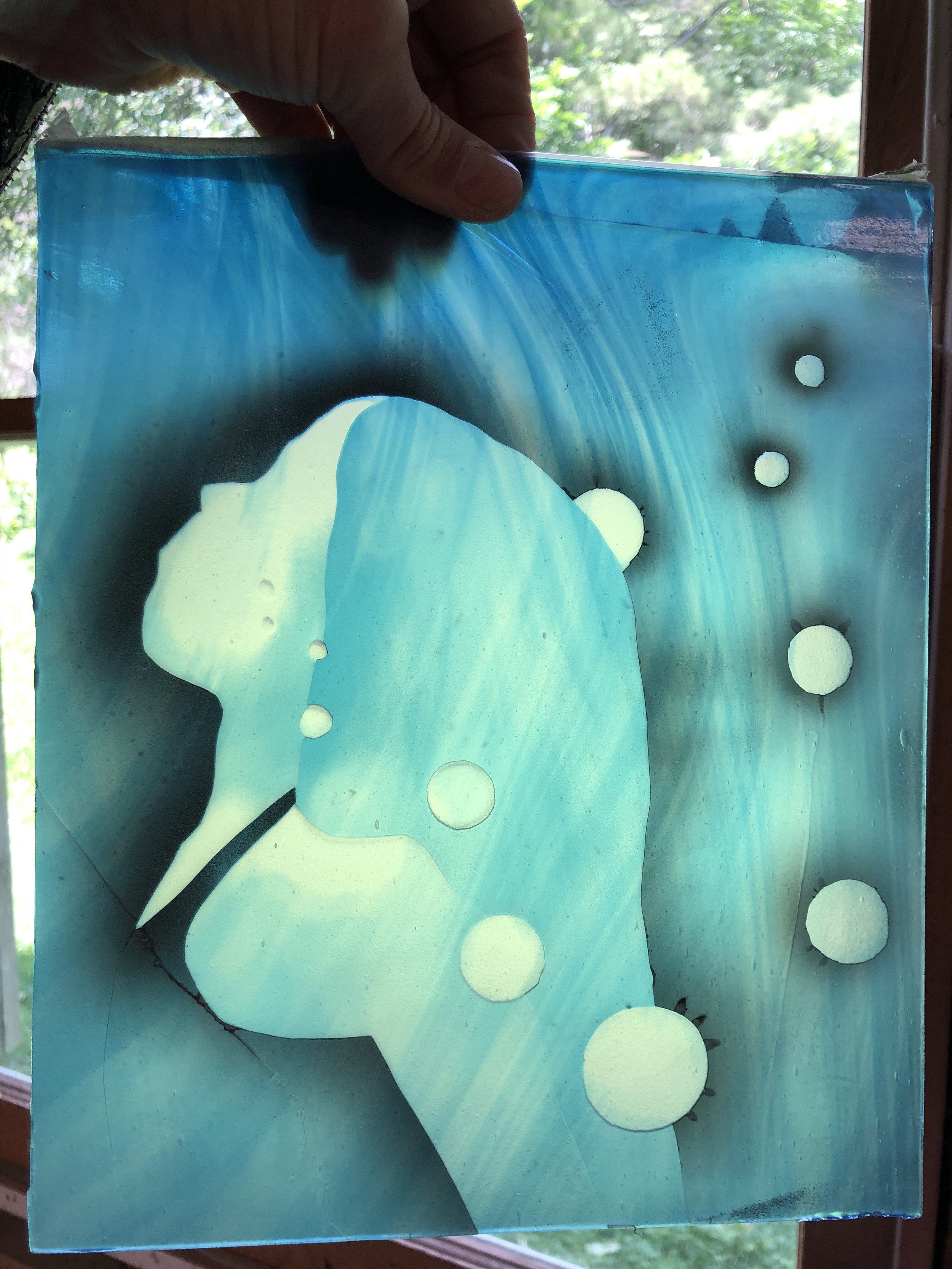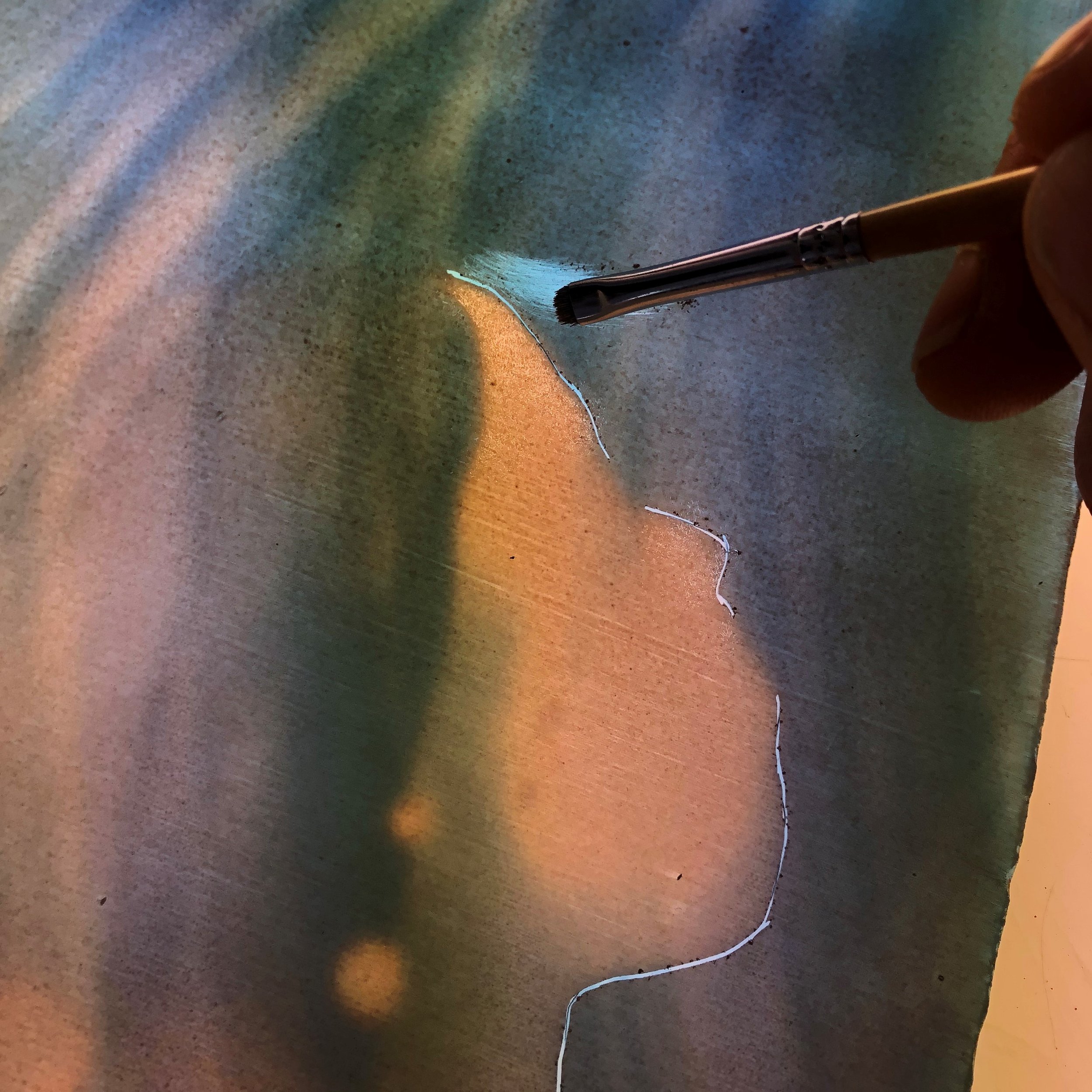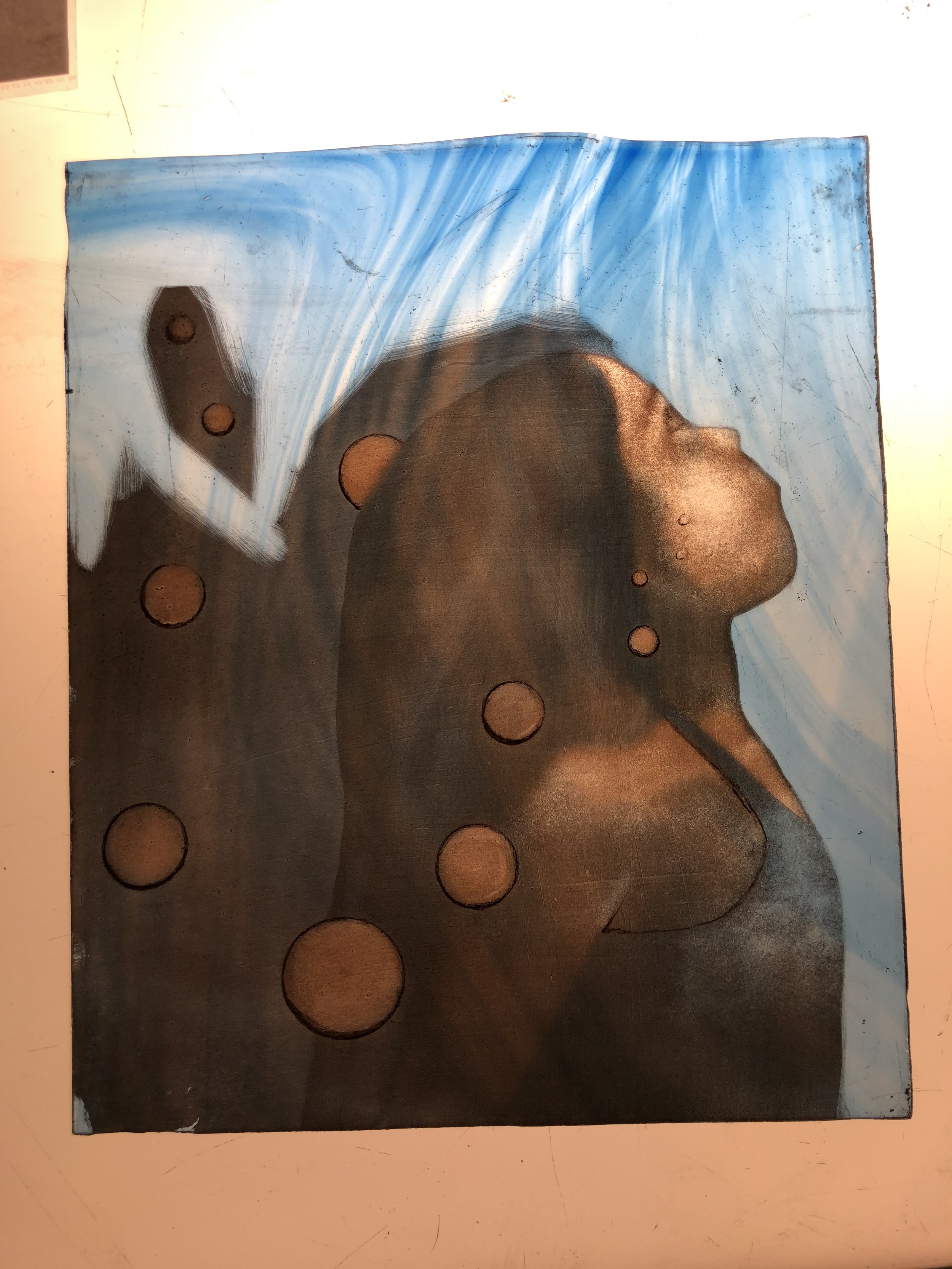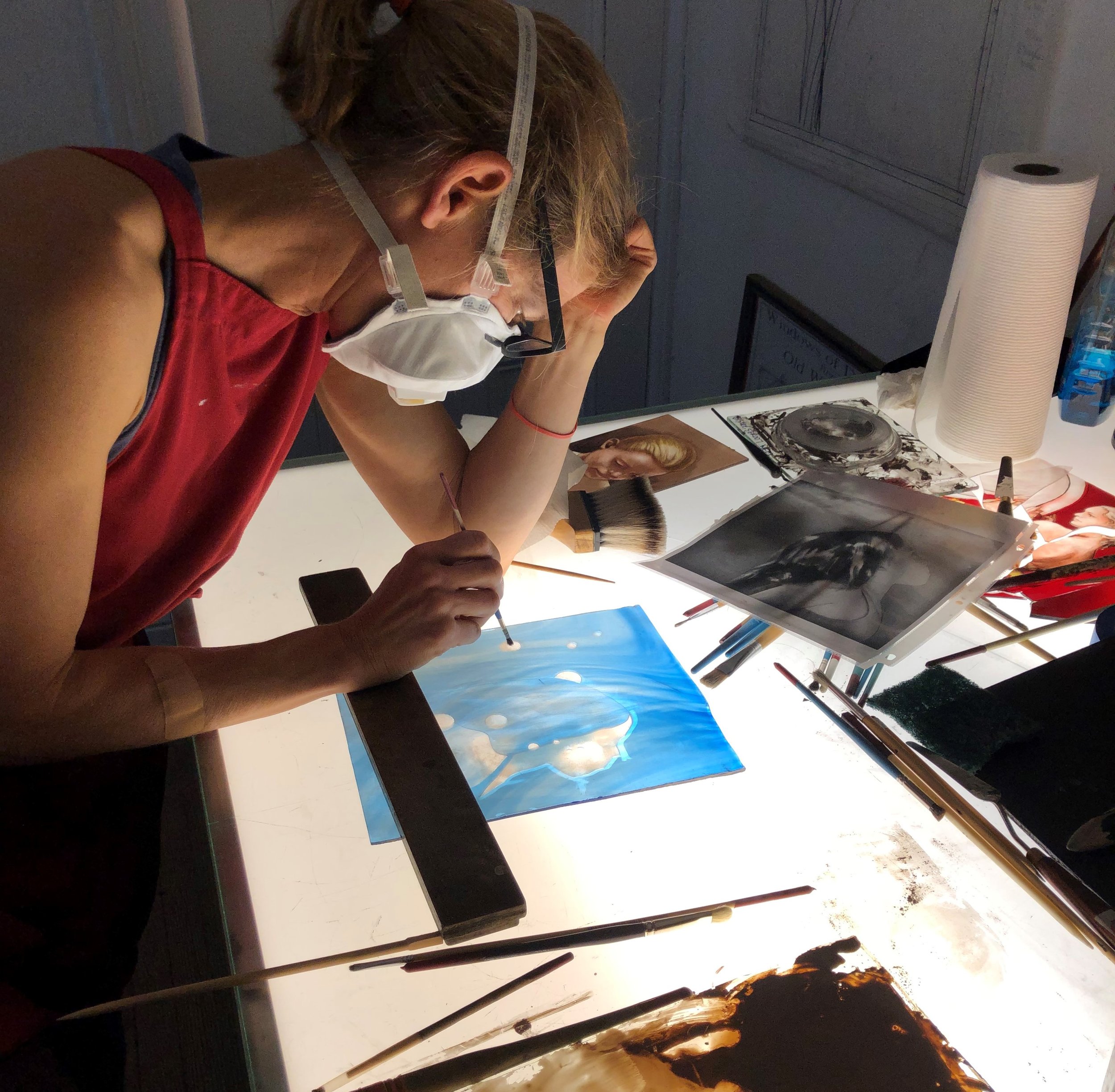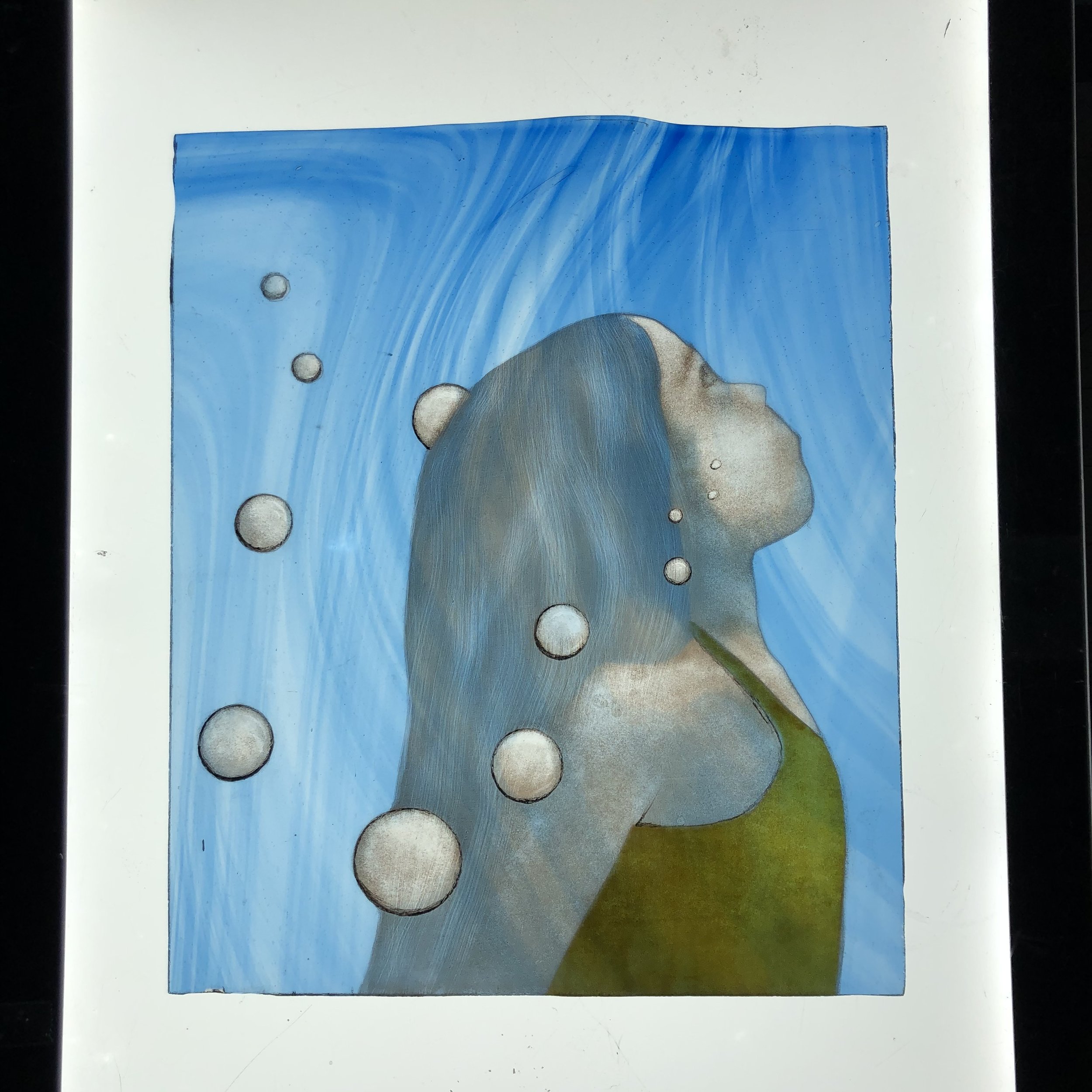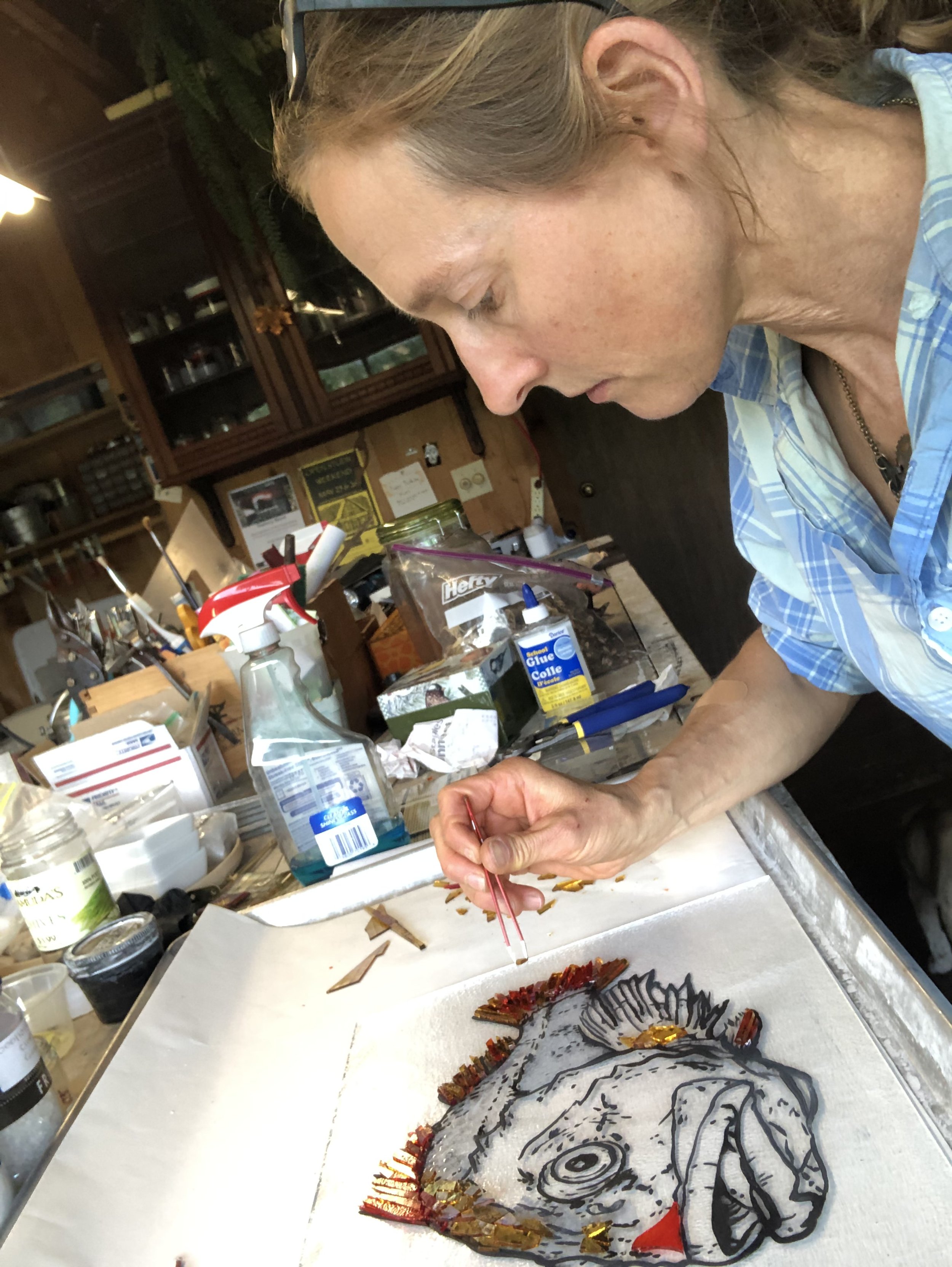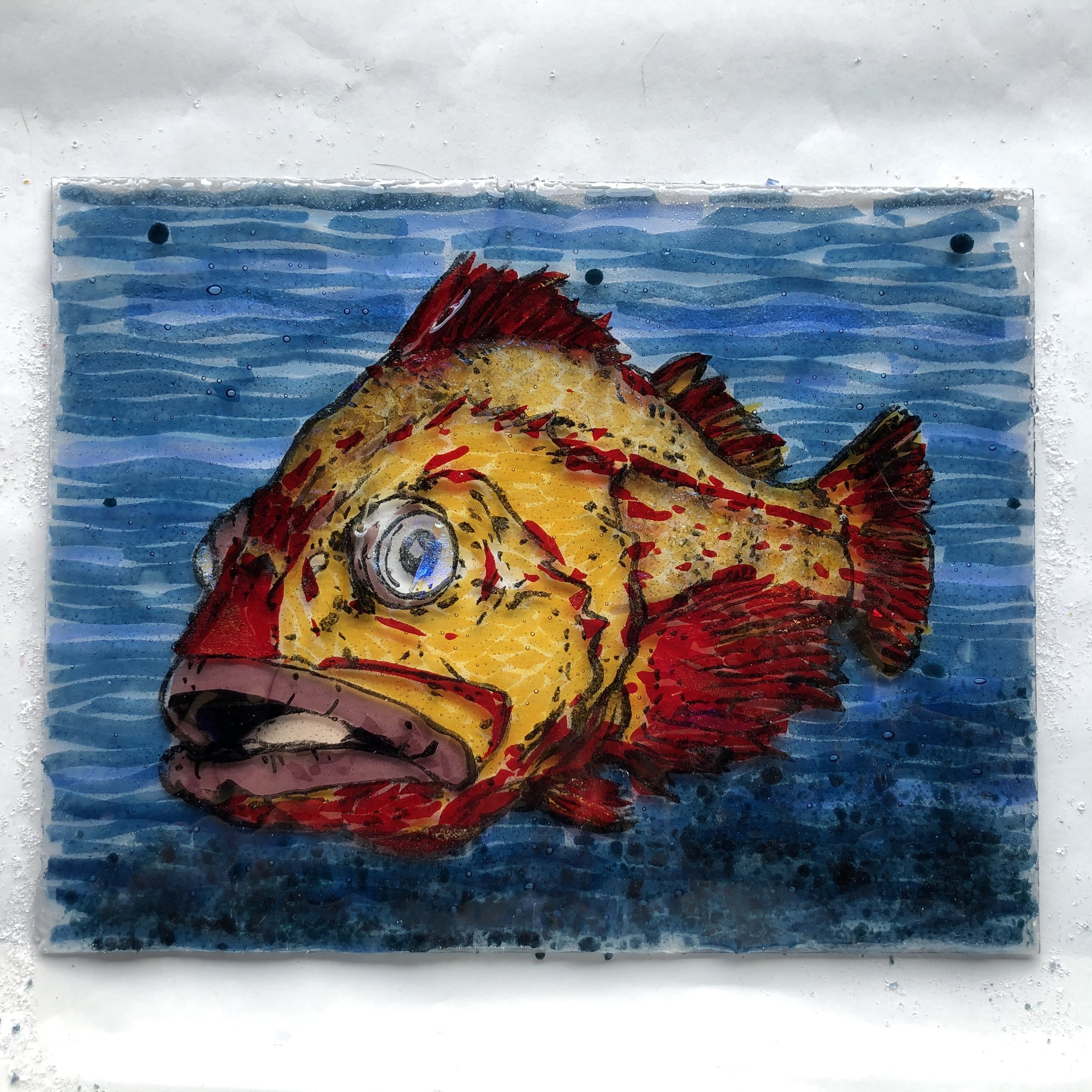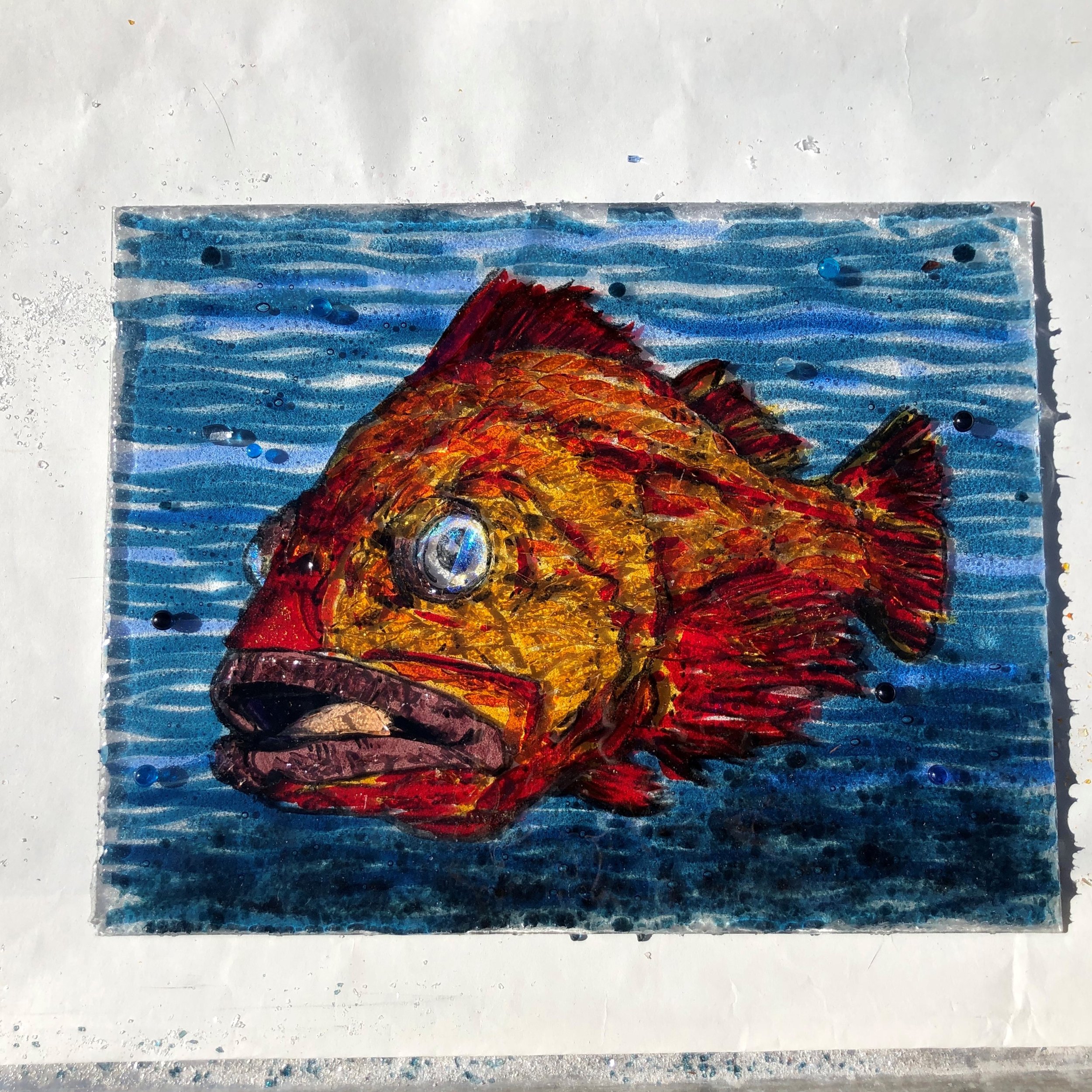Glass painting in Vermont
July 14, 2021
Last week I attended the glass painting workshop for which American Glass Guild had awarded me a scholarship. The course was held in Pittsford, Vermont at the Twin Elms Studio of Hallie Monroe, a glass artist of 30+ years and specialist in glass painting.
As luck had it, I was the only student so I received all of Hallie's amazing instruction and was able to focus on the projects I had brought to work on instead of a standard image. I chose three diverse projects that employed techniques other than just glass painting. All three began with existing images that I traced and embellished as I went along.
The images above are of tall ships from a photo in the Tacoma port in 1901. I painted the ships in vitreous (made of glass) paint in multiple layers with a kiln firing between each layer to bind the glass paint to the sheet glass.
Glass does not absorb paint like paper or canvas, so the outline is applied carefully with a quill pen and vitreous paint then fired in a kiln. If it is not fired it will easily rub off the glass while the shading is done. Next, a thinner wash of paint is applied, dried and then the image is derived by removing the paint. The process is more like a wood block print process of removing the material to create the image rather than adding material like an oil painting. This process is often referred to as painting with light because the light shining through where the paint has been removed creates the magic.
For my second project I wanted to recreate the image from a photograph of me at age three, swimming in our backyard pool. I started with flashed glass (color coated clear glass) and sandblasted away the image in stages (first 4 photos below). Then I added paint shading in several layers and kiln firings and finished with a silver stain to color the swim suit (3 photos below).
This third piece below combined glass painting for the outline features of the fish and fused glass for the color. It involved painting sketch lines on a clear piece of glass and firing that in the kiln. Once it was cool I could add frit (colored grains of glass) and small pieces of cut glass that all have the same fusing temperature parameters. After the first firing I wanted to apply a heavier layer of color so I added more frit and glass and fired it a second time.
This workshop blew the borders of glass arts wide open for me. I'm super excited to continue integrating the new techniques with my art. It will take some time and funding to outfit my studio with a kiln, painting and fusing materials, but I will get there!




